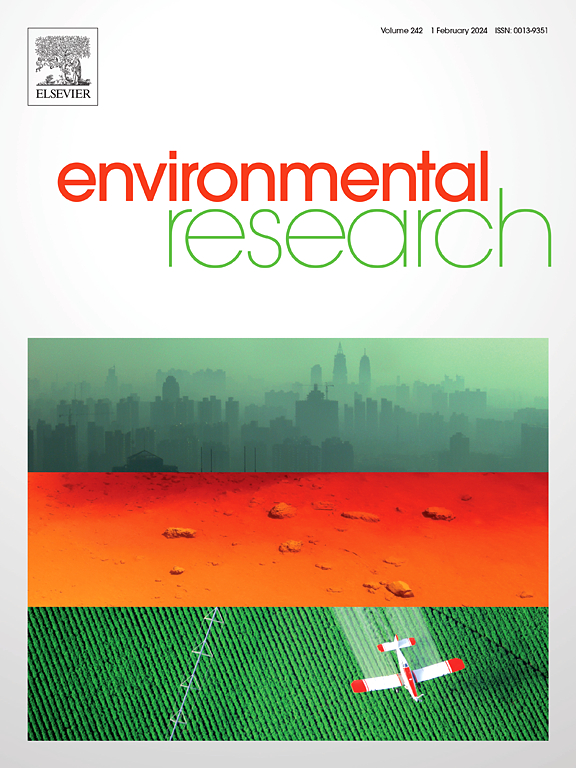Mechanistic investigation of NiAl-layered double hydroxide activated peroxymonosulfate for tetracycline degradation: Feasibility of an integrated ultrafiltration system
IF 7.7
2区 环境科学与生态学
Q1 ENVIRONMENTAL SCIENCES
引用次数: 0
Abstract
Transition metal catalysts have shown great potential as peroxymonosulfate (PMS) activators in sulfate radical-based advanced oxidation processes (SR-AOPs). However, their practical application in water remediation is often limited by resource scarcity and the toxicity of certain transition metals. In this study, we synthesized a cost-effective and highly efficient NiAl-layered double hydroxide (NiAl-LDH) catalyst for PMS activation and systematically investigated its mechanism in tetracycline (TC) degradation. The synthesized NiAl-LDH exhibited a well-crystalline, plate-like CO32--type structure with an average particle size of ∼100 nm. Despite having a smaller surface area than pure Ni(OH)2, the NiAl-LDH/PMS system demonstrated superior TC degradation efficiency. The initial pH significantly influenced both TC degradation performance and LDH structural stability. While CO32− and PO43− slightly inhibited TC degradation, Cl−, NO3−, and SO42− had negligible effects. Ultrafiltration with the NiAl-LDH/PMS system enabled the removal of 500 mg/L TC while maintaining a high permeate flux of 2680 LMH. In real wastewater matrices, TC removal efficiency slightly decreased to 85.1 %, with a reduction in flux (1990 LMH) due to organic matters and concentrated anions. The DFT calculations proved that enhanced electron conductivity, strong PMS adsorption, and reduced endothermic energy of PMS activation resulted in improved catalytic activity of NiAl-LDH compared to pure Ni(OH)2. Mechanistic investigations revealed that hydroxyl radicals (·OH) were generated via the redox cycling of Ni2+/Ni3+ on NiAl-LDH with PMS and rapidly transformed into singlet oxygen (1O2) through superoxide (O2−·) intermediates. Furthermore, TC degradation pathways were elucidated, providing deeper insights into its catalytic performance for water treatment applications.

nial层状双氢氧化物活化过氧单硫酸盐降解四环素的机理研究:集成超滤系统的可行性
过渡金属催化剂作为过氧单硫酸盐(PMS)活化剂在硫酸盐自由基基高级氧化过程(SR-AOPs)中表现出很大的潜力。然而,它们在水修复中的实际应用往往受到资源稀缺和某些过渡金属毒性的限制。在本研究中,我们合成了一种经济高效的NiAl-layered double hydrogen (NiAl-LDH)催化剂用于PMS的活化,并系统地研究了其降解四环素(TC)的机理。合成的NiAl-LDH具有良好的晶状片状CO32型结构,平均粒径为~ 100 nm。尽管NiAl-LDH/PMS体系的表面积比纯Ni(OH)2小,但表现出优异的TC降解效率。初始pH对TC降解性能和LDH结构稳定性均有显著影响。CO32−和PO43−可以轻微抑制TC的降解,而Cl−、NO3−和SO42−的作用可以忽略不计。采用NiAl-LDH/PMS系统进行超滤,可去除500 mg/L TC,同时保持2680 LMH的高渗透通量。在实际的废水基质中,由于有机物和浓阴离子的存在,通量(1990 LMH)降低,TC的去除率略微下降至85.1%。DFT计算证明,与纯Ni(OH)2相比,Ni - ldh的电子导电性增强、PMS的强吸附和PMS活化的吸热能降低导致Ni - ldh的催化活性提高。机理研究表明,Ni2+/Ni3+通过PMS在NiAl-LDH上氧化还原循环生成羟基自由基(·OH),并通过超氧化物(O2−·)中间体迅速转化为单线态氧(1O2)。此外,还阐明了TC的降解途径,为其在水处理应用中的催化性能提供了更深入的见解。
本文章由计算机程序翻译,如有差异,请以英文原文为准。
求助全文
约1分钟内获得全文
求助全文
来源期刊

Environmental Research
环境科学-公共卫生、环境卫生与职业卫生
CiteScore
12.60
自引率
8.40%
发文量
2480
审稿时长
4.7 months
期刊介绍:
The Environmental Research journal presents a broad range of interdisciplinary research, focused on addressing worldwide environmental concerns and featuring innovative findings. Our publication strives to explore relevant anthropogenic issues across various environmental sectors, showcasing practical applications in real-life settings.
 求助内容:
求助内容: 应助结果提醒方式:
应助结果提醒方式:


